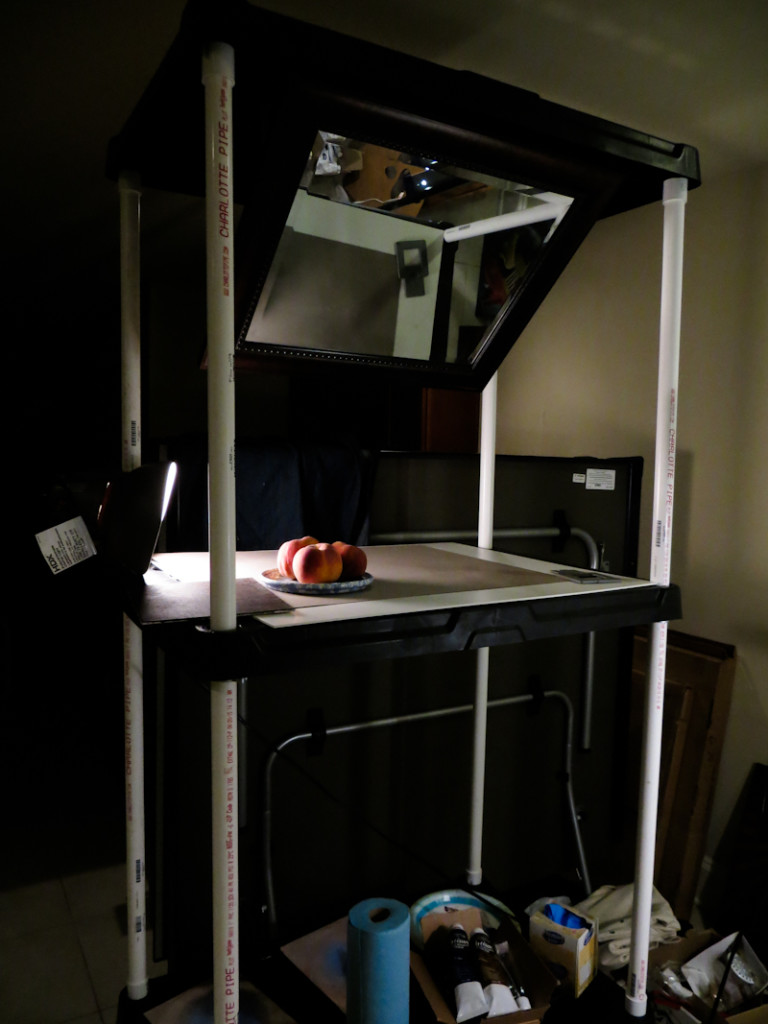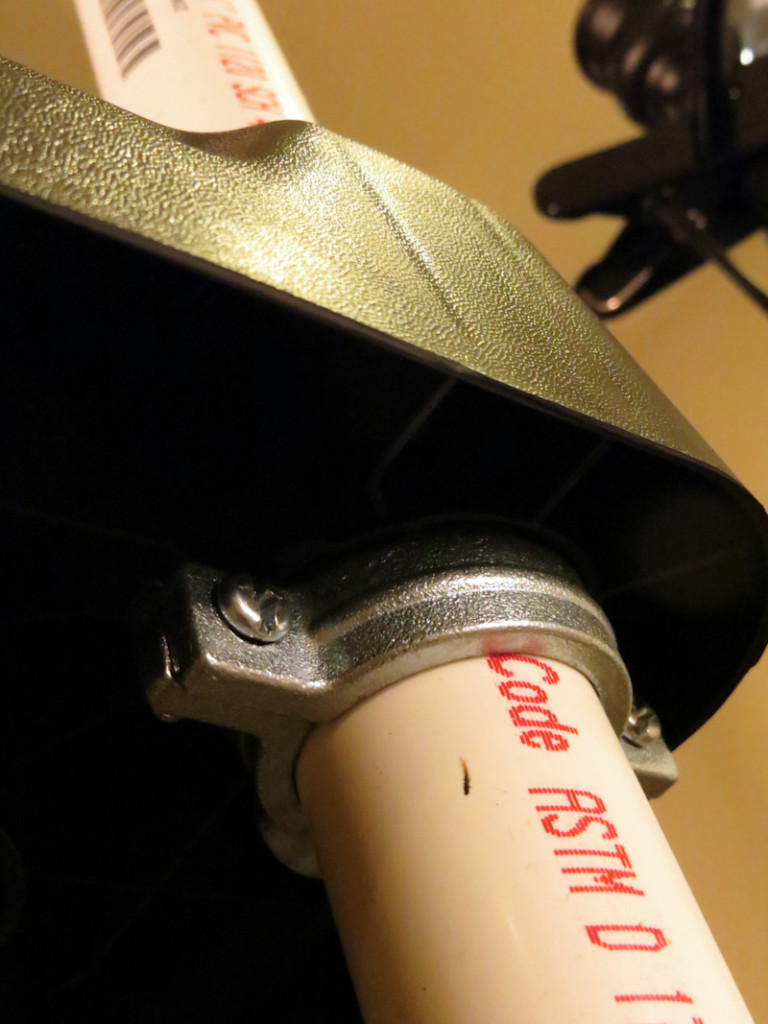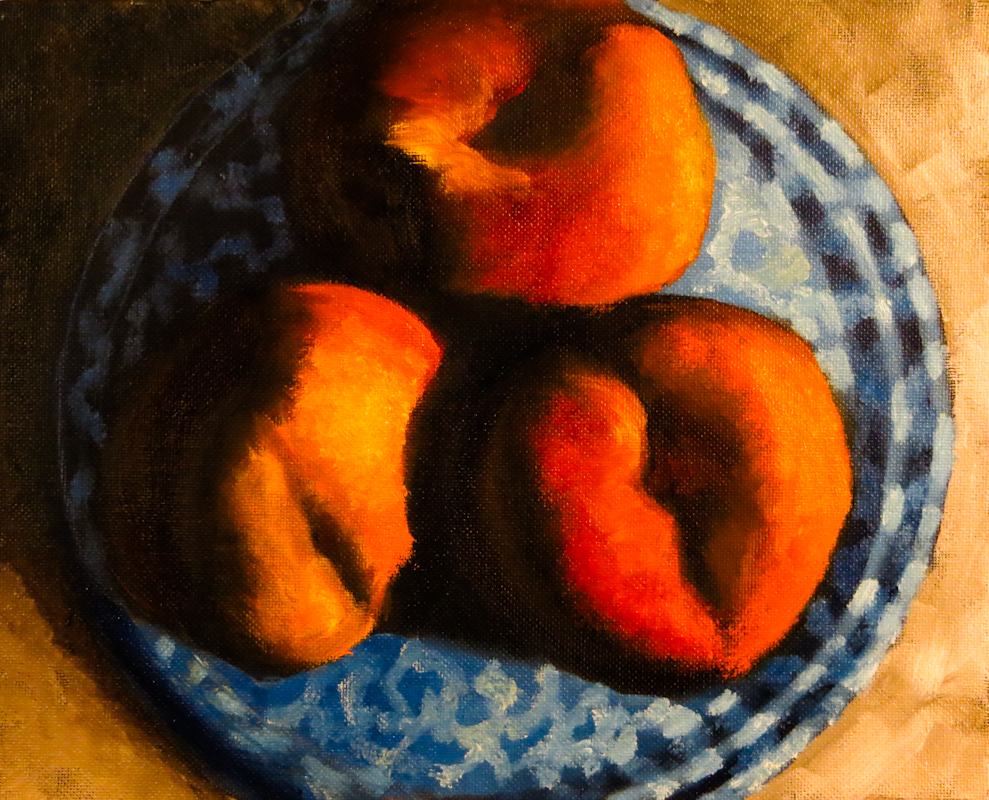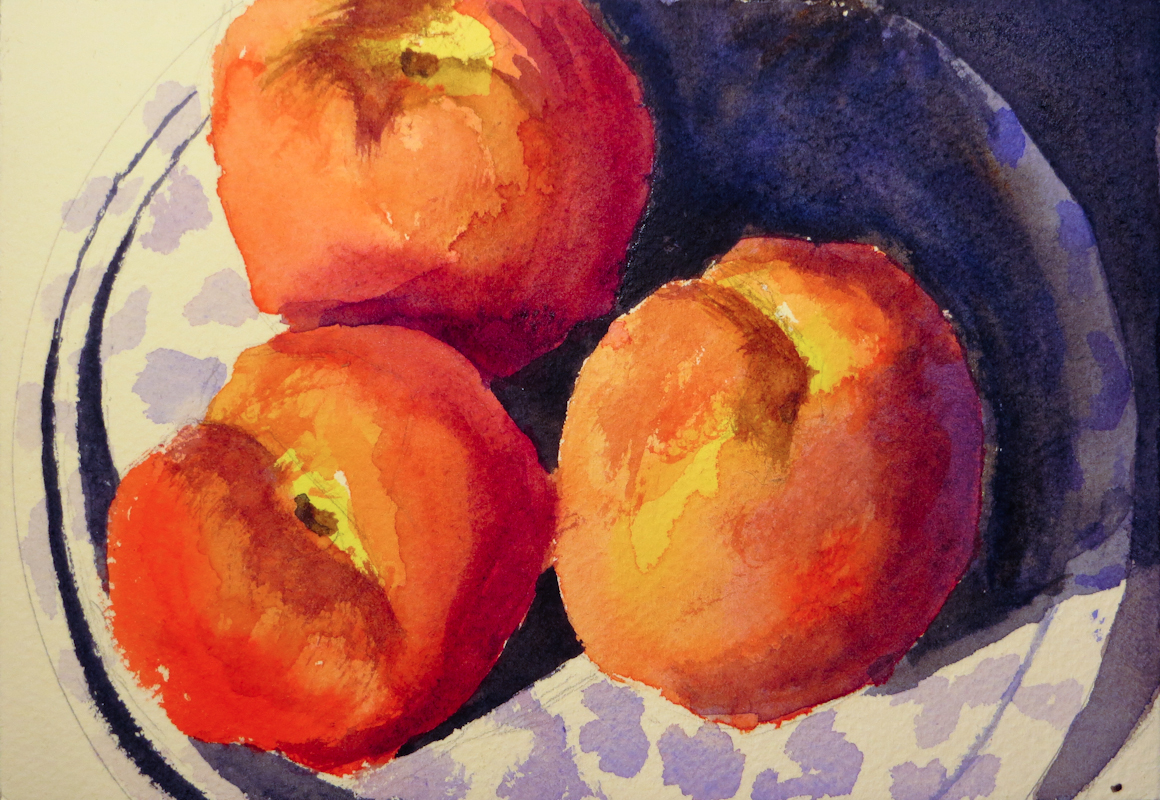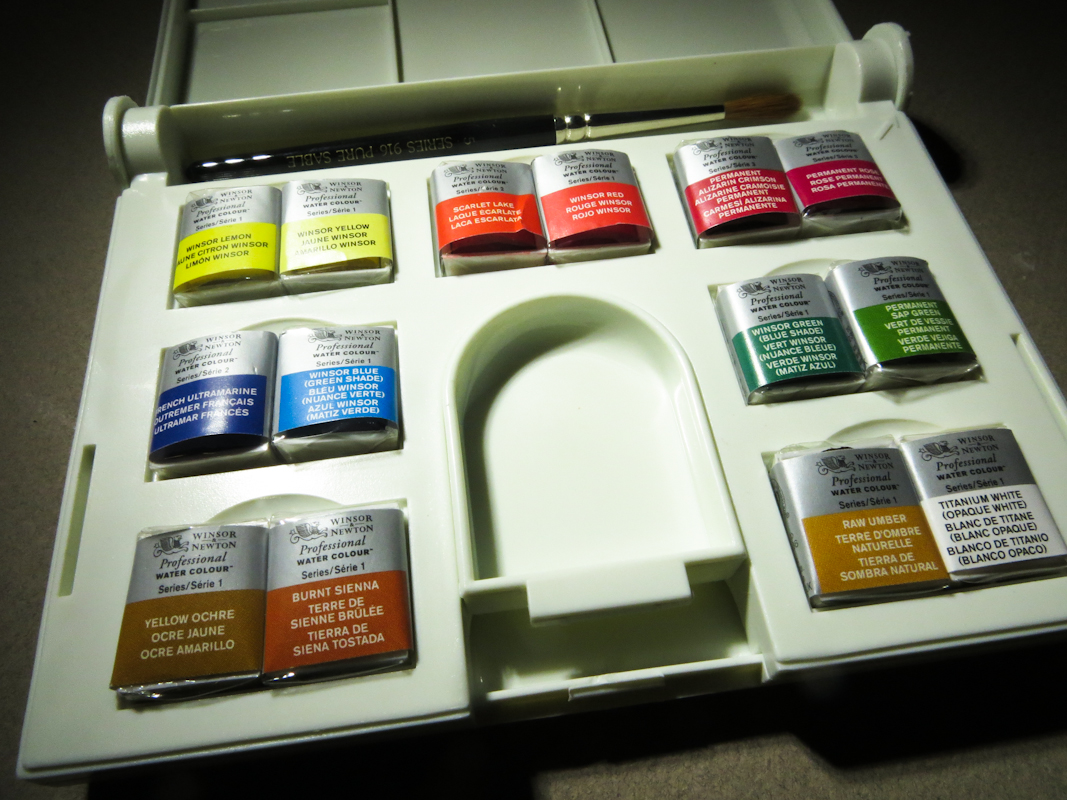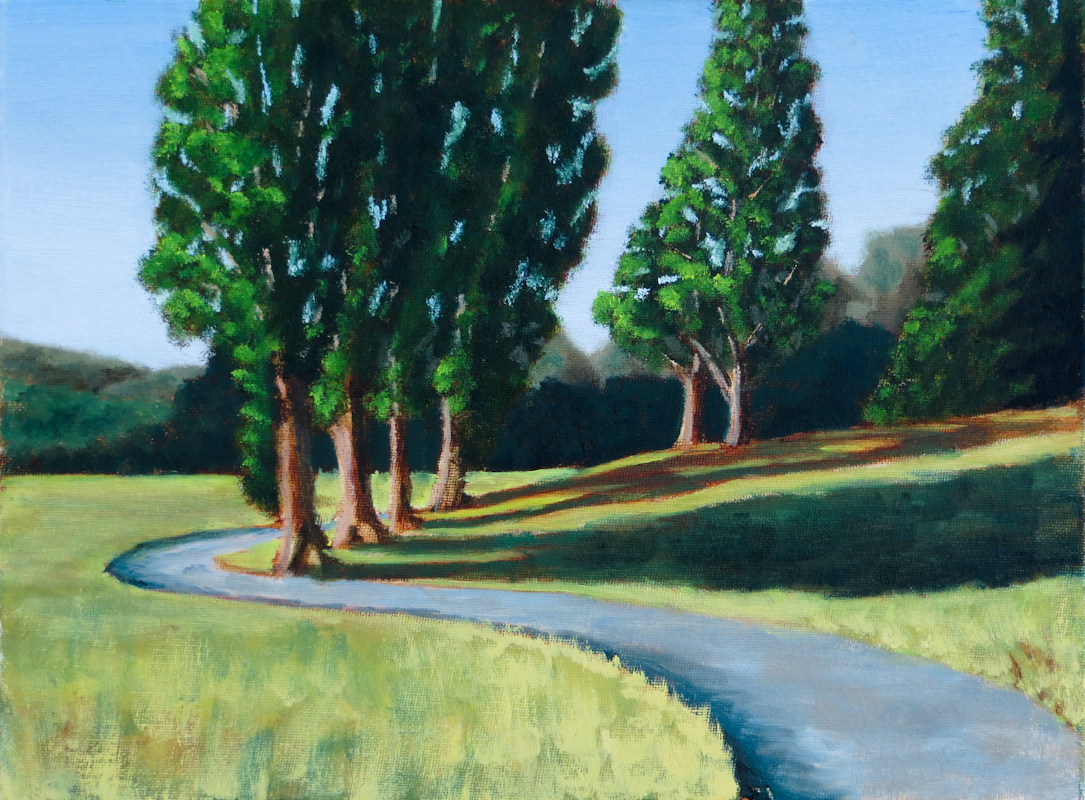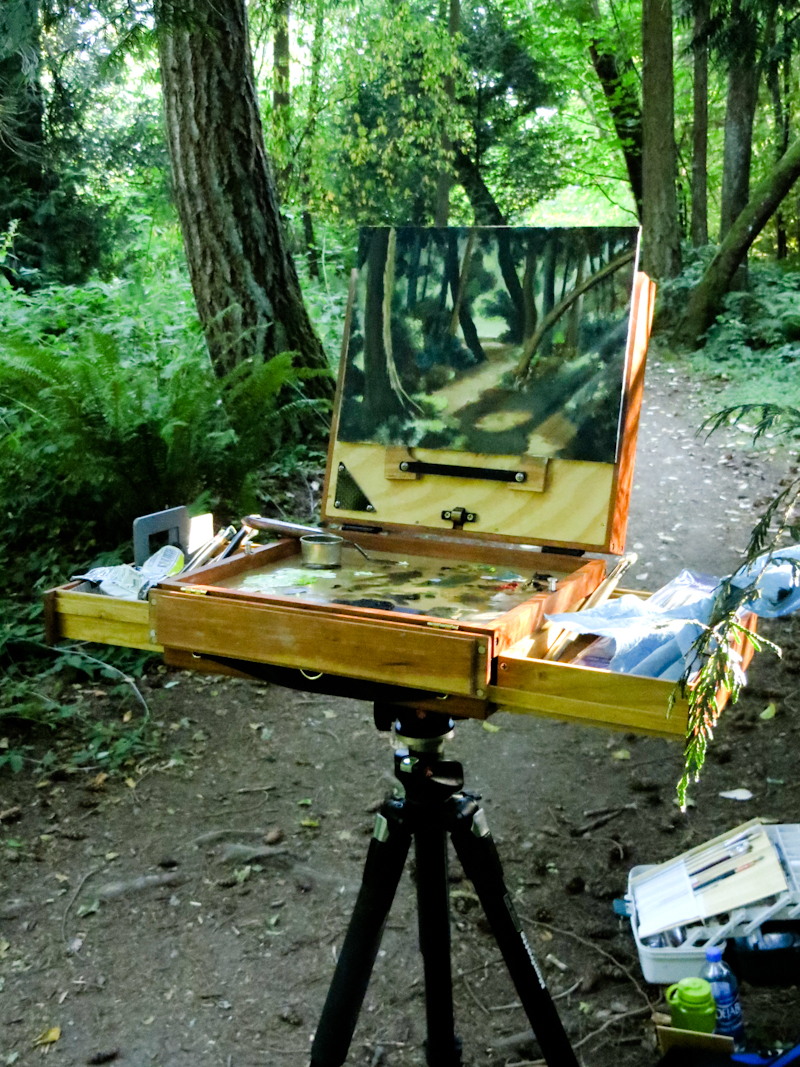This weekend I attended the Plein Air Washington Columbia Gorge Paintout in Washougal. I chose to set up next to the Fern Prairie Modelers runway, across the street from the transfer station. This is a great location because you can paint right next to your vehicle, there are trees for shade, and restrooms nearby at Captain William Clark Regional Park. The view is looking east into the Steigerwald Lake National Wildlife Refuge.
When I started the under painting around 10am, the sun was in front of me to the right. It was very hot, but also hazy, and the haze was a good thing because it helped to keep the scene from changing significantly over the next 5 hours as I painted. During this time, the sun moved to a position directly to my right, so the main changes in front of me were the snowfields on Mt Hood (it went from back-lit to side-lit) and the form shadows on the near trees. Everything else – the distant hills, the barns, and the foreground meadows stayed pretty much the same.
I spent about 30 minutes on the under painting, using thin Burnt Sienna and then Raw Umber.

As often happens, I found the half-finished painting to be nearly as compelling as the completed piece. I really like the way the Burnt Sienna foreground plays against the Cerulean and Raw Umber in the distant hills.
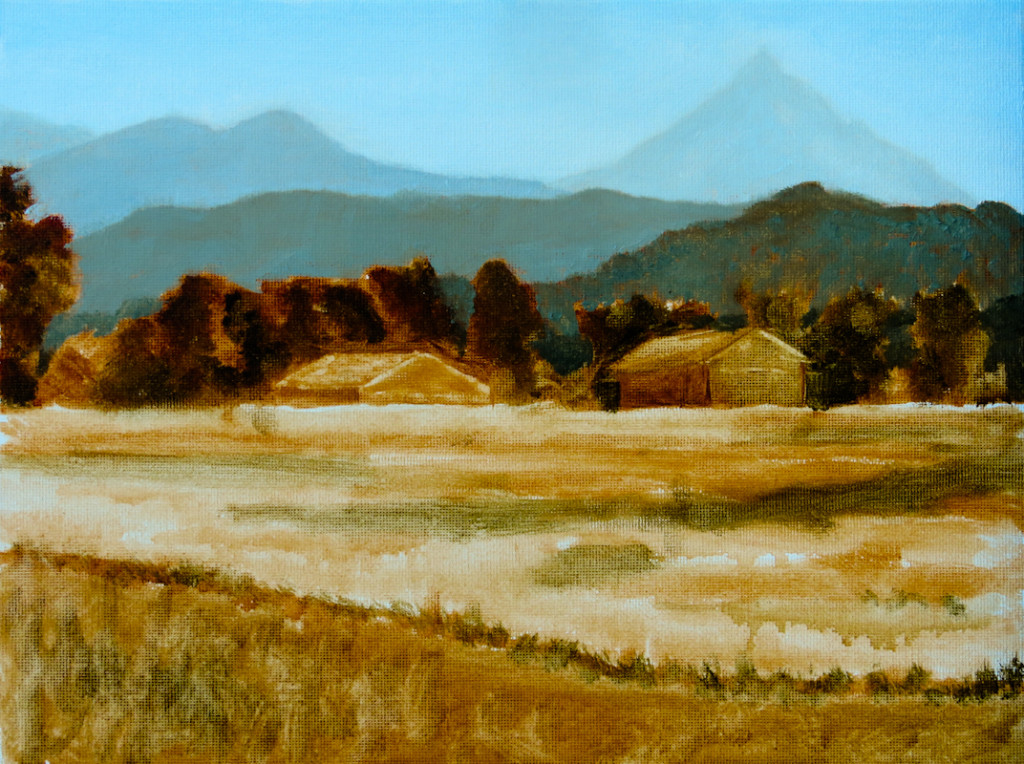
Here’s the finished piece, a 9″ x 12″ canvas panel.

The paintout was a lot of fun and at the end of the day we all met for dinner at the Puffin Cafe, a Caribbean restaurant floating on the Columbia at the Port of Camas. All in all, an excellent trip with lots of painting, interesting people, and great food!





